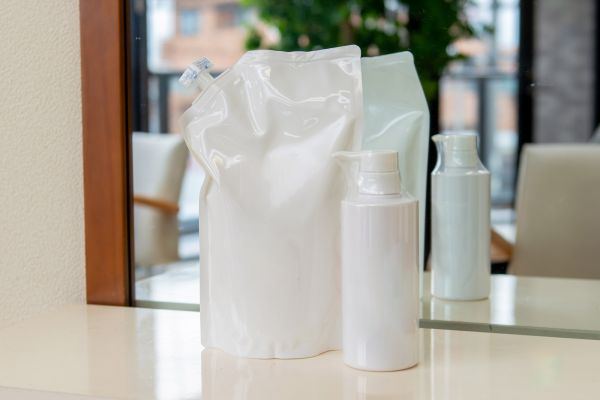
Reuse - the role of refill pouches
How flexible packaging formats support reusable packaging systems
Pouches are an important format produced by flexible packaging manufacturers. Formats where refill pouches are used to support a reusable bottle system have been around for some time. Frequently encountered at home, for example, is the system for detergents or similar products, where the consumer buys a hand pump bottle in a supermarket and the refills come in the form of flexible pouches. The bottle can be refilled at home, avoiding the occurrence of excess packaging waste.

